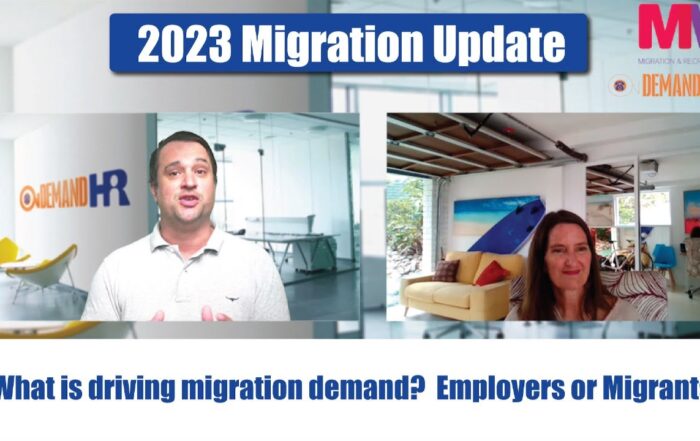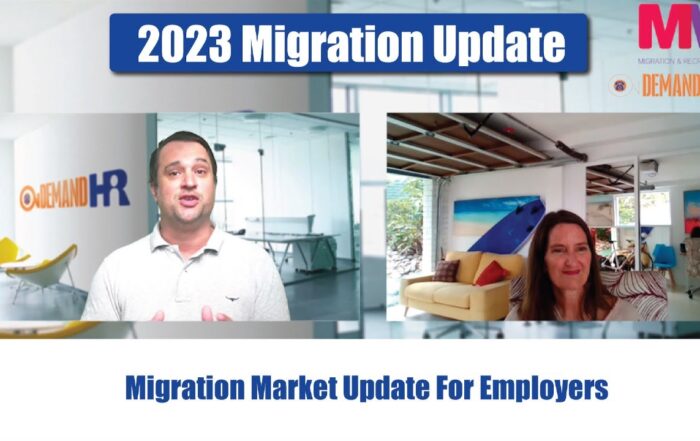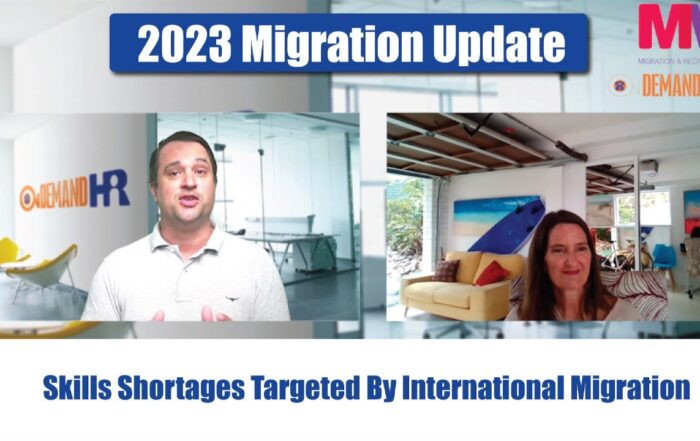Recruitment Market Update – June 2022
Welcome to On Demand HR’s Recruitment market update for June 2022. Today we will take a look at the ABS figures recently released for May as well as unpacking some business surveys compiled by Business NSW which show some interesting sentiments on the ground.
Please see below for a full transcript of this video
Share the HR or workplace relations challenge facing your business and one of our experienced consultants will be in touch within 24 hours with a strategic action plan or discover the best strategy yourself by accessing out free online training library.
Transcript
Hi there and welcome to On Demand HR’s Recruitment market update for June 2022. Today we will take a look at the ABS figures recently released for May as well as unpacking some business surveys compiled by Business NSW which show some interesting sentiments on the ground.
First, we take a look at the headline unemployment rate which continues to show record low sub 4% unemployment. The general market consensus is that these record low unemployment rates will continue and perhaps even tighten further for the remainder of 2022.
We then turn our attention to the number of employed people again showing record high levels. This appears to be consistent with the reduced unemployment rate with those looking for work able to easily find it. This likely has been exacerbated by the low levels of international migration throughout the pandemic but we will touch on that a little later.
We now turn our attention to the average monthly hours worked which again is at decade long highs. We can see some significant variance in these figures throughout the pandemic which is likely as a result of the Federal JobKeeper scheme. Despite this, the strength shown by these numbers following the easing of restrictions, not only tell us that anyone who wants a job can get it, but also workers are generally able to get as many hours as they would like to work. In our view, this really puts a spotlight on the narrative of the current Federal Government around casual and part time workers not having security and control around their incomes.
This is further supported by the underemployment figures again at decade lows for both males and females with the impact of the Delta and Omicron waves apparent.
What about migration? Well as has been well reported in the media, throughout the pandemic, for the first time we can recall, Australia had a negative net migration rate which is forecasted not to return to pre pandemic levels based on Treasury forecasts until at least 2023/2024. This supply side shock of workers will take some time to resolve before a more normal recruitment market is returned. In our view, this could be one of the drivers that are causing the mass shortages we are seeing in the Hospitality, Restaurants and Tourism sectors as these are typical first steps for new migrants on arrival.
So what do we have when it comes to the current state of the recruitment market in Australia? We have record low unemployment, record high number of people employed, record monthly hours worked, record low unemployment and record low migration. What does this add up to?
In our view, these are all a confirmation of a massive undersupply in the labour market. This seems fairly obvious to us on the ground as an active participant in the recruitment market, but when every indicator seems to point in the same direction, businesses should be standing up and taking notice.
However, supply is only one side of the equation. As Adam Smith introduced us to the invisible hands, to truly understand the current state of the Australian employment market, we must also consider the demand side of the equation.
We can see that according the latest reports release in May by Seek, the job advertisements remain higher than pre pandemic levels across the country with Queensland and Victoria leading the way and Western Australia and New South Wales not trailing too far behind.
We can also see that Hospitality, Tourism and Retail continue to be one of the fastest growing sectors which further illustrates the point we discussed earlier around the impact of the lack of international migration has had on the employment market.
So in summary, we have record high demand coupled with record low supply in the labour market. So what should businesses do to adapt? Well that is a little beyond the scope of this recruitment market update. But the high level answer is that in order to recruit talent in this market, businesses will need to adapt and change their approach to recruitment. Things like not offering workplace flexibility and long, drawn out recruitment processes are no longer acceptable to the market and those businesses that persist with doing things “the way they have always been done” will simply be left behind.
But Australia wide market statistics are one thing, but what are businesses really experience on the ground in their recruitment efforts. Typically to tackle this problem we would share with you our own practical experiences as an advocate in the recruitment market on behalf of our clients. But today, we are going to take a different approach. We are blessed with some recent data from Business NSW in their Workforce Skills Survey released on 23 June 2022. There were a number of observations from this survey and we will share a couple of the most interesting and relevant ones with you now.
72% of businesses surveyed indicated that they had at least 3 failed recruitment campaigns over the past 12 months. 26% of businesses also reported that the staff shortages they experienced were as a result of not getting any applicants for their job vacancies. Just take a moment to let that sink in. 72% of NSW businesses have had at least 3 failed recruitment campaigns over the past 12 months.
In our opinion, sure a lot of this many have to do with the current state of the recruitment market that we have just discussed. However, there is not much that businesses can do to control this. They must focus in on what they can control in order to fill their vacant positions. What kind of things are in their control? Things like:
- Regular Salary benchmarking to ensure you are meeting the market expectations of the role (they may have changed recently)
- Having a robust recruitment process focused on speed and keeping applicants engaged throughout the process
- Selling the benefits of the role and your business, not just focusing on what you are looking for the salary on offer. The low hanging fruit is really workplace flexibility for most roles. Ask yourself the question if an employee really needs to be in the office, or is it more of a case of this is how it has always been done?
Of course, if you would like some guidance on some of the other things that your business can do in order to remain competitive in this tight recruitment market, please don’t hesitate to reach out to On Demand HR by visiting our website at www.ondemandhr.com.au
So that’s a wrap for our June 2022 recruitment market update and before I introduce you to some of the On Demand HR team to talk about out free HR consultation and strategic action plan, I think that Business NSW’s Chief Executive summed up the current challenges in the recruitment market perfectly by saying “The business community in NSW is facing it’s most significant workforce challenge in more than 50 years”. So my question to you is what is your business going to do to adapt?






